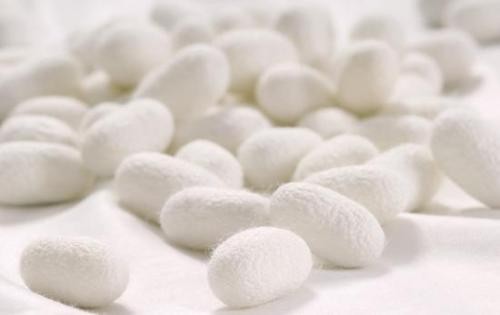
Drying process of silkworm cocoon drying
Cocoon drying, adept person all know, the purpose is to prevent the cocoon living pupa transferred during storage, silkworm legacy parasitic fly eggs out of larvae and pupae of decay and damage the cocoon layer, at the same time also make cocoon layer after heat treatment appropriate change outer soluble properties of sericin, raised strong cocoon cooking resistance, protection of non-broken cocoon silk reeling and storage.
To obtain the silkworm cocoon with higher drying quality, a lot of manufacturers also tried a lot of methods really, but always in the traditional method in the circle straight dry method and dry method. But no matter which kind has the fatal weakness to be able to dry fresh cocoon at a time, although simplified the operation process, reduce the chance of cocoon damage, but easy to cause fresh cocoon backlog. Dry again for the first time to fresh cocoon baking onto a baking rate at about 60% of semi-dry cocoon, by using low temperature drying for a second time to dry, this method can improve the utilization of drying uniformity and drying equipment, is also the current commonly used methods for many factory, but there are certain problems of temperature and humidity control does not reach the designated position, pupa body humidity is higher, is not conducive to the late of silk reeling.
In fact, the silkworm cocoon is mainly composed of cocoon layer and pupa body. The weight of cocoon layer in general fresh cocoon only accounts for 18%-24%. Fresh cocoons contain a lot of water, usually 100 kilograms of fresh cocoons baked to the appropriate dry cocoon to remove about 60 kilograms of water. Under normal circumstances, the moisture content of fresh cocoons is about 13%-15%, and that of pupae is about 73-77%. So, silkworm cocoon drying is mainly to remove the water in the pupa body, and the cocoon layer only lost a small amount of water. The traditional methods are not nearly as sophisticated.
Before baking silkworm cocoons with a heat pump dryer, the amount of cocoons laid according to the thickness of laid cocoons, generally not more than two half cocoon horizontal height is appropriate, the use of vertical penetration air circulation dryer to not more than three high is appropriate. The main processing conditions of drying silkworm cocoons are temperature, humidity, wind speed, cocoon amount and drying time. Must conform to the law of water evaporation at each stage of drying, such as temperature should be gradually reduced from high to low, humidity gradually increased from low, wind speed gradually reduced from large to small.
The drying process of silkworm cocoon is mainly divided into three stages: preheating, constant drying and decelerating drying:
1.Preheating stage: the fresh cocoon heating, the heat energy through the cocoon layer into the cocoon chamber to kill the pupa body, pupa body water into the evaporation period. At this stage, the temperature has to rise gradually, but rapidly.
2.At the stage of constant drying, the water evaporation of pupae is the most and the evaporation rate is the fastest. During this period, the diffusion rate of water in the chrysalis is in equilibrium with the evaporation rate on the surface of the chrysalis. The temperature of the chrysalis is lower than the air temperature in the drying chamber, and the temperature of the chrysalis is lower than the temperature of the chrysalis, until the diffusion rate of water in the chrysalis gradually falls behind the evaporation rate on the surface of the chrysalis.
3.The drying phase in which the moisture in the cocoon gradually decreases and the evaporation rate correspondingly slows down. During this period, the temperature of the cocoon gradually rises close to that of hot air. When the inside of the pupa begins to evaporate, the slowing down and drying turns from the first stage to the second stage until the drying ends.


